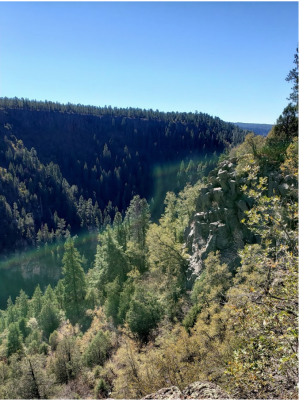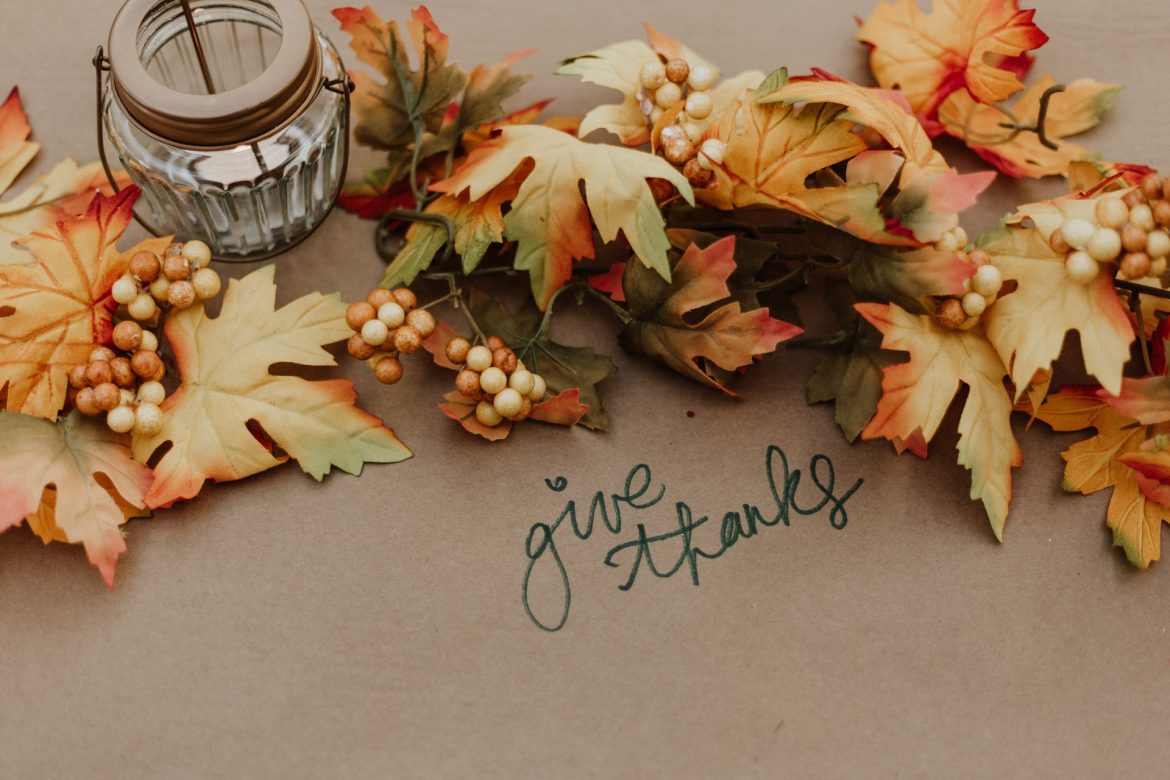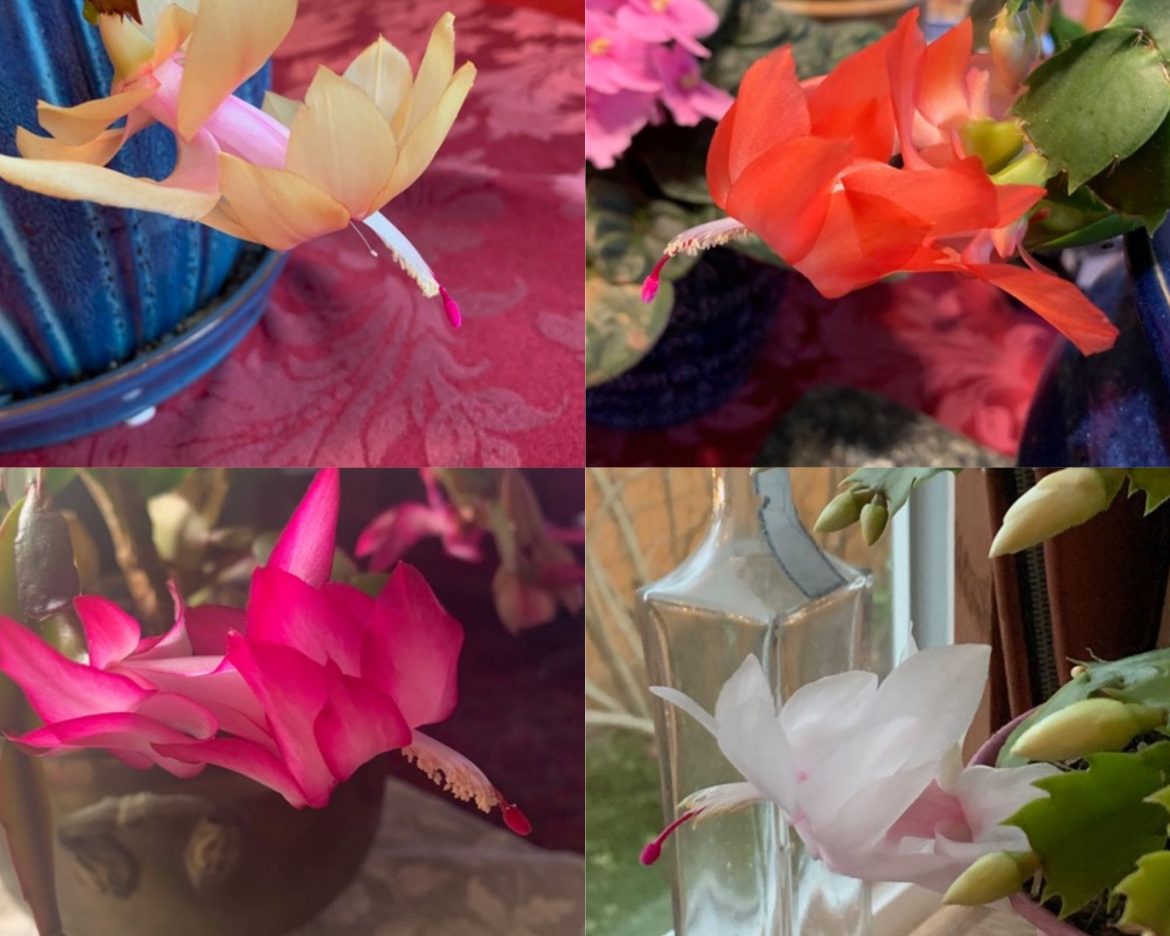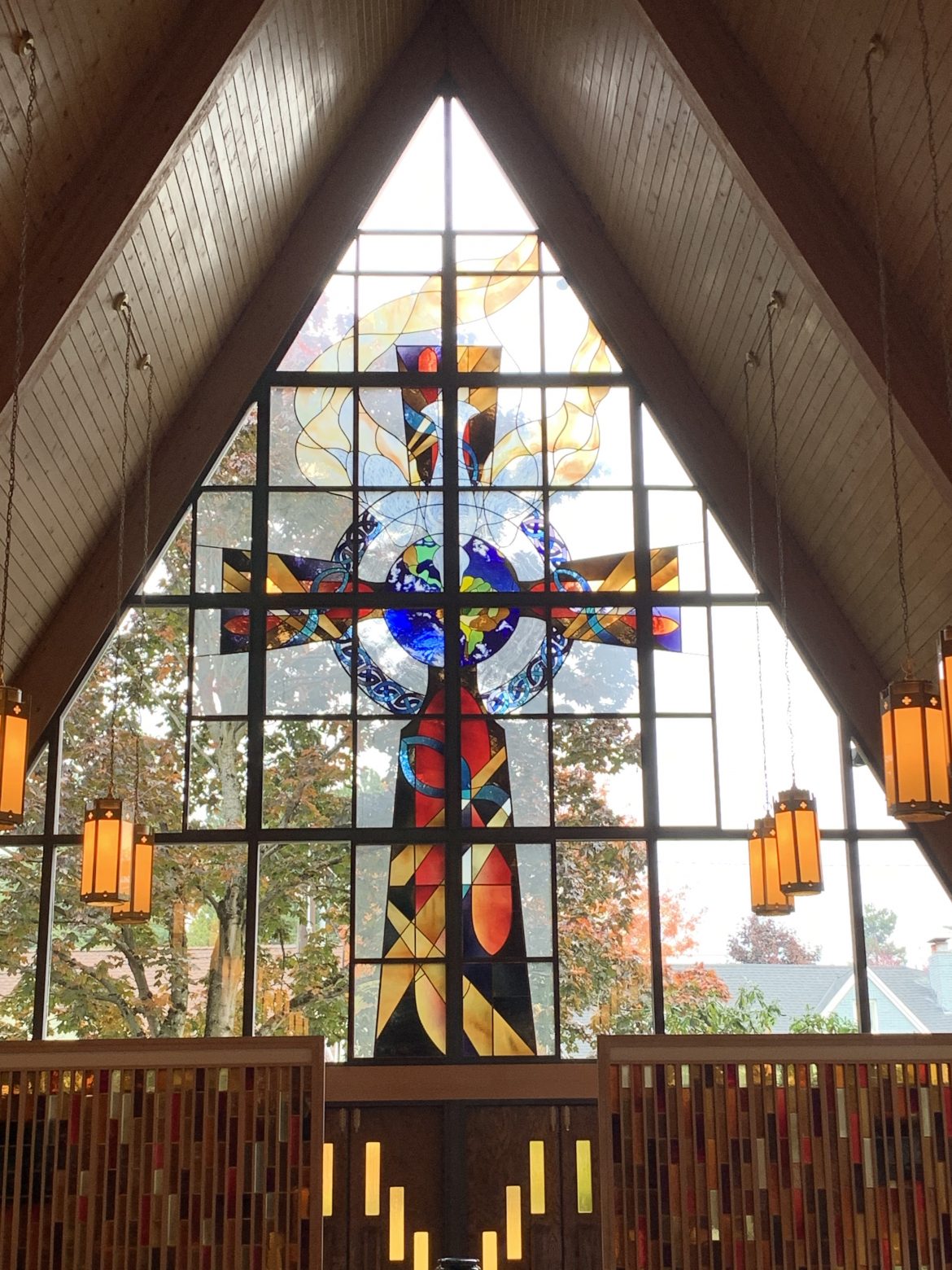by Carol Dixon
I love words! Since childhood I have been an avid reader, from my teens & twenties I have written poetry, songs, & Biblical reflections and, more recently, have written a number of hymns which have been published by the Iona Community among others since the early 2000s. For more than half my lifetime, I have been a lay preacher, dealing with the spoken word, despite being shy and unable to read aloud as a youngster – my father once told me that I spoke my first word aged six months then added under his breath that he didn’t think I had stopped speaking since!
Words are wonderful things, conjuring up images in our imagination, interesting us, empowering us, consoling us, delighting us. So it is little wonder that one of my favourite passages from the Gospels is John Chapter 1: ‘In the beginning was the Word, and the Word was with God, and the word was God.‘
I often like comparing favourite well-known readings in different translations so that they don’t become stale and also to discover what new insights I might discover. I love to look out and see what particular word might resonate with me and spark my imagination and it’s interesting to note if a different word catches my eye at different times (You might like to try it).
I like the Message Bible translation which keeps close to the original but phrases it in new ways:
The Life-Light
1-2 The Word was first,
the Word present to God,
God present to the Word.
The Word was God,
in readiness for God from day one.
3-5 Everything was created through him;
nothing—not one thing!—
came into being without him.
What came into existence was Life,
and the Life was Light to live by.
The Life-Light blazed out of the darkness;
the darkness couldn’t put it out. (John 1 v 1-5 The Message, Eugene Peterson)
Another modern version ‘The Word on the street’, a translation for Young People has a very arresting way of starting the New Testament (which is called ‘New Promise’):
‘Nothing. No light, no time, no substance, no matter – the Voice was there. Before anything moved, mutated or mated, Jesus, God’s Voice, was there with God from the kick-off. How come? Cos Jesus, ‘God’s Voice’, is God. Before anything began, they had always been. Before there was even anywhere to be, they were there.
Jesus got the name ‘God’s Voice’ because he just spoke and stuff started. From nothing to everything, sparked only by the Voice. There’s nothing that doesn’t have the phrase ‘made by Jesus’ stamped on it somewhere. His words were life itself, and they lit up people’s lives – his light could blast its way into the darkest corner, yet the people who preferred darkness still missed it.’ (John 1 v 1-5 The Word on the street, Rob Lacey)
The beginning of John’s Gospel (in whatever translation you prefer) tells a profound truth – that God wanted to communicate with the world in a way they could relate to so he shared part of himself, his living Word, who would show humanity what God was really like, attested by his own Word made flesh. The Word of God became a human being, full of grace and truth.
So this Advent, as we try to tell the story to people who walk in darkness around us, how will we communicate God’s love to our world in our time. What will the Word on the street be for us?
A poem I wrote a few years ago says:
Word made flesh
How do you
flesh out
a word,
God?
Cover letters
in sinew,
skin?
Is it possible
to produce
pigment
on paper,
Or life-lines
and laughter lines
in script,
So that the impact
resonates throughout
the mists of
time?
In a word,
Yes.
LOVE! © Carol Dixon
Let’s leave the last word to John – this time in a musical setting of the first chapter of the last gospel written by another friend of mine & fellow hymn writer, Greta Wrigley: Word of God.
Word of God, source of life, born into our world of strife.
Word of God, bringing light, born into our world of night.
Chorus: The Word of God became a human being,
Jesus born at Bethlehem;
The Word of God became a human being,
Glory to god in highest heaven.
Word of God, full of grace, born into our human race.
Word of God, truth made known, In him is God’s glory shown. Chorus:
Word of God, good news to tell, God is here, Emmanuel.
Word of God, Prince of Peace, his kingdom comes and will not cease. Chorus: © Words & Music Greta Wrigley
by June Friesen
Genesis 9: God said, “I am giving you a sign of my covenant with you and with all living creatures, for all generations to come. 13 I have placed my rainbow in the clouds. It is the sign of my covenant with you and with all the earth. 14 When I send clouds over the earth, the rainbow will appear in the clouds, 15 and I will remember my covenant with you and with all living creatures. Never again will the floodwaters destroy all life. 16 When I see the rainbow in the clouds, I will remember the eternal covenant between God and every living creature on earth.” 17 Then God said to Noah, “Yes, this rainbow is the sign of the covenant I am confirming with all the creatures on earth.”
A sign of God’s forever presence over the earth is still seen in the skies today, usually after a rain. We call it a rainbow possibly for a couple of reasons: 1) a rainbow is often present after a rain and 2) a rainbow is caused by how the sun reflects off of the rain moisture in the atmosphere. As a child growing up, I remember a picture from my Bible lessons in church which showed Noah at an altar with his hands raised towards the heavens where the rainbow was extended across the sky. This is a recent photo I took not seeing the arch of light over the trees nor did I see the ‘dead tree’ which someone pointed out to me looks as if someone is extending their arms heaven wards to God. As I ponder, meditate and pray for our world and particularly our country, I cannot help but be challenged by this photo to also stand with my arms raised heavenward seeking God’s presence and light over me.
EMBRACE GOD’S PRESENCE OF LIGHT
“God, where are you in this darkness that seems to prevail?
I feel so alone.
I feel abandoned.
I feel as if I am dying.
I am waiting….
I am looking….
I am reaching upwards…..
Are you there…….
Where are you…..
Ah…….
What is that I see?
A covering of Your presence over this darkness…
But also over me…….
Thank you God, for your gift of hope –
I lift my heart and my hands to you –
I receive into my spirit and my being your hope today.
Amen.
From November 23rd to December 14th, our prayer cards and online courses are on sale! Both make great Christmas presents. We are delighted to offer these to you at a discounted price during this season. We will ship the prayer cards for you to the address you provide, so no need to deal with the post office lines! Additional discounts may be available for bulk orders, please email us if you are interested!
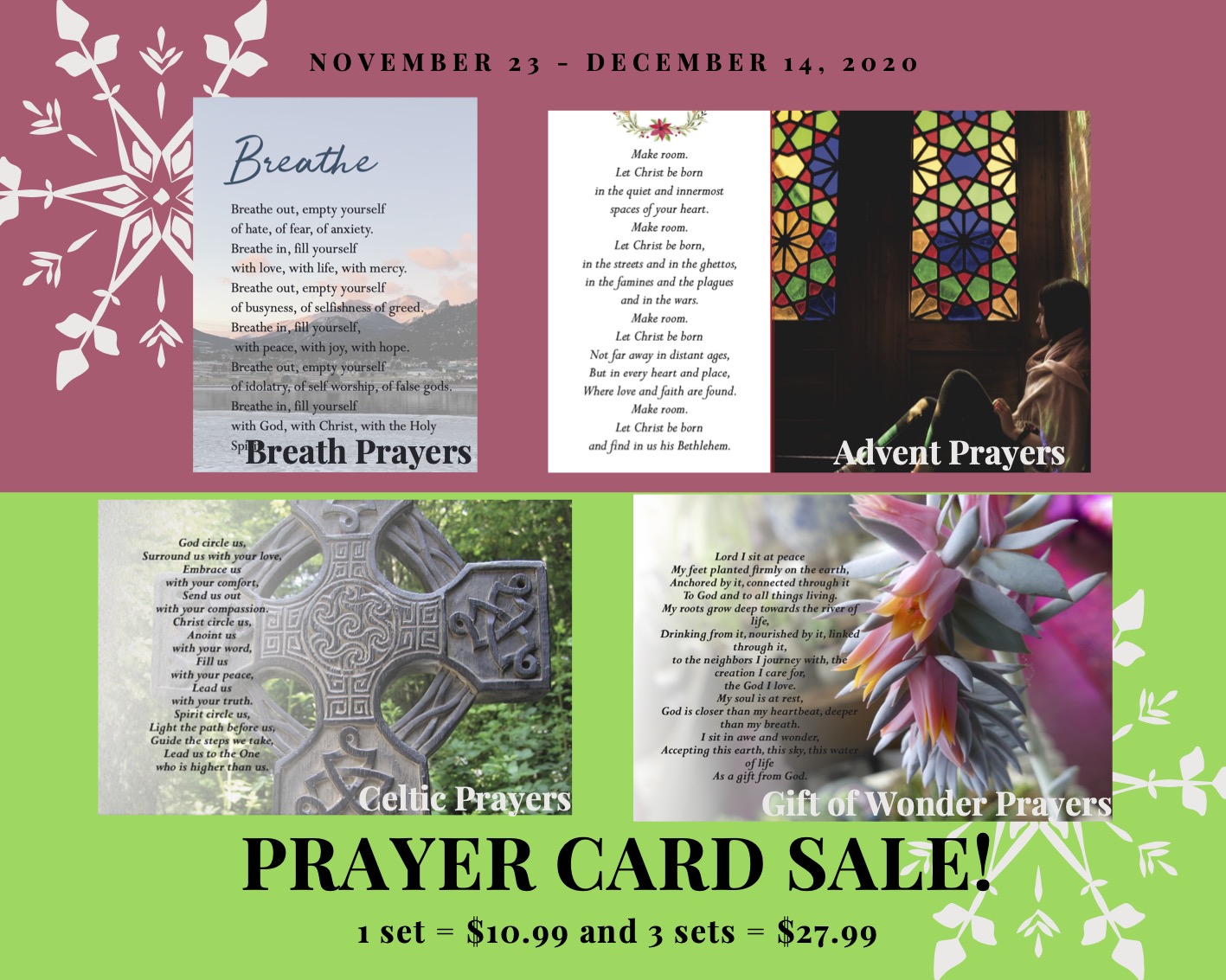
Our courses make great gifts as well! Here is how to gift a course:
- Click on the course page you wish to gift.
- Click “Purchase” button
- Create an account using the email of the person to whom you are gifting and password.
- Input your payment information.
- The recipient of the course will receive an email letting them know they are enrolled. Be sure to share the password you created with them!
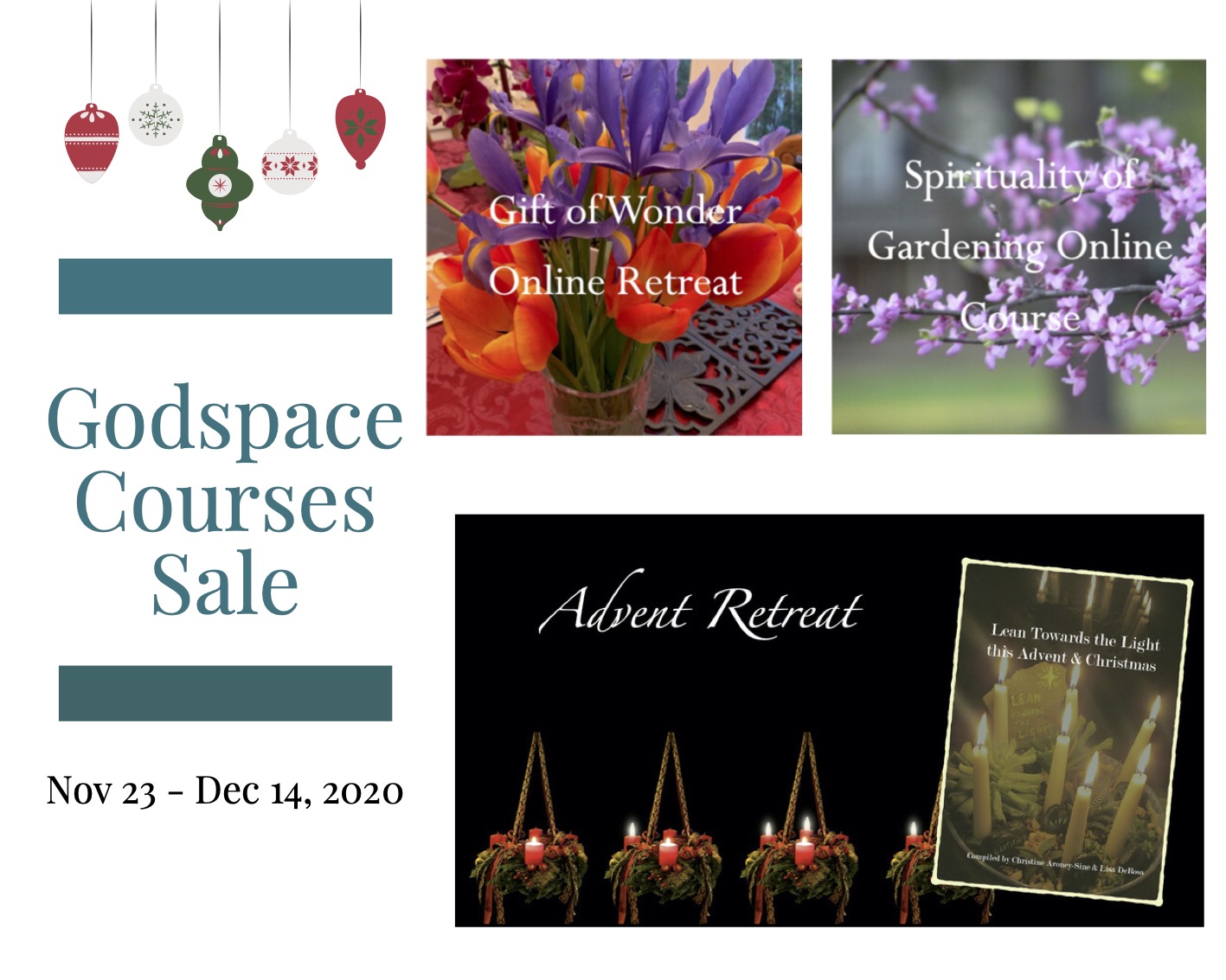
by Christine Sine
Even in the midst of pandemics, social distancing and deep injustices that divide us, there is still much to give thanks for.
This service has been adapted from a service pdf provided by St Andrews Episcopal church Seattle, for use in the home, as part of the main meal of the day and can be used not just for Thanksgiving but for any celebrative occasion where you would like to give thanks. It is appropriate for use via Zoom, FaceTime, or other video software, as a way to worship with the people you call family and friends who are far away.
Consider setting the table and surroundings with your favorite and/or special seasonal items in the home. A tablecloth, flowers, and your favorite place settings that express the festive theme of the day or season. The meal may consist of favorite and/or seasonal foods. We sit down to feast with God and for that we bring our full heart, our favorite things.
This service draws from the meal tradition of the early church (before formalized Eucharist). We call it Eukharistía: Ancient Greek (εὐχαριστία), meaning “gratitude, giving of thanks”. And this we can and should do whenever we share the bounty of the earth! All Christians are called to bless and so while this meal is not sacramental, it includes blessings of the food and drink shared, and the people gathered.
Preparation – For times of pandemic/epidemic.
We begin by washing, as we were washed in our baptism. We cleanse our hands as we were cleansed in the waters of new birth. We do this not because we are afraid, but because we were commanded to love: and to cleanse our hands, and gather in spirit, is how we love the vulnerable, whom Jesus loved. May we be instruments of love. May the sacrifices we make be for the good of our human family near and far. Each person present then washes their hands thoroughly with soap and water.
Once washed each person should help with setting out the food (best if this is separate from where people will sit for the meal) When all is ready those present serve themselves and then either take their places at the table or sit around the area, socially distanced from each other and from where food is being shared. (Adapted from Thanksgiving/Agape meal liturgy St Andrews Episcopal Church Seattle)
Once the main course has been eaten, the following Thanksgiving liturgy can be shared. Give each participant in the meal either a scripture reading or a prayer to recite.
A Thanksgiving Liturgy
God eternal and righteous One,
Who created the heavens and the earth,
we gather to give you thanks.
For breath that fills us with your life,
For love that softens our hearts,
For beauty revealed at every turn.
Christ redeeming and forgiving One,
Who is always faithful and merciful.
We gather to give you thanks,
For renewal, transforming our lives,
For peace calming the chaos of our souls,
For hope restoring our faith.
Spirit sustaining, and compassionate One,
Who calls us into relationship with the living God,
We give you thanks,
For caring when our hearts are aching,
For friends supportive in times of need,
For generosity lavish and overflowing.
God who created the earth and the heavens,
Eternal, Redeeming and Sustaining One,
We gather to give you thanks,
We come with hearts full of gratitude,
For all things good,
We give you thanks for You.
(Pause to express gratitude for your own areas of thanksgiving)
For the universe immense and unknown,
For the earth on which we live,
For humankind made in your image.
Thanks and praise to God our creator.
For the way you entered human history as one of us
For the sacrifice you made for all of us,
For dying that we might live.
Thanks and praise to Christ our redeemer,
For the wonder of your indwelling presence,
For the comfort of your guidance and direction,
For drawing us together as one body.
Thanks and praise to the Holy Spirit our sustainer.
Through your will we are made whole,
Through your love we are renewed.
Through your abiding presence we become one community.
Thanks and praise to God, Creator, Redeemer and Sustainer through all eternity.
Psalm 105:1-8 (TPT) (Evidently this was sung as the Ark of the Covenant was brought up to Jerusalem)
Go ahead and give God thanks
for all the glorious things he has done!
Go ahead and worship him!
Tell everyone about his wonders!
2 Let’s sing his praises! Sing, and put all of his miracles to music!
3 Shine and make your joyful boast in him, you lovers of God.
Let’s be happy and keep rejoicing no matter what.
4 Seek more of his strength! Seek more of him!
Let’s always be seeking the light of his face.
5 Don’t you ever forget his miracles and marvels.
Hold to your heart every judgment he has decreed.
6 For you are his servants, the true seed of Abraham,
and you are the chosen ones, Jacob’s sons.
7 For he is the Lord our God,
and his wise authority[b] can be seen in all he does.
8–9 For though a thousand generations may pass away,
he is still true to his word.
He has kept every promise[c] he made to Abraham and to Isaac.
The Word of the Lord. Thanks be to God.
Let your heart be always guided by the peace of the Anointed One, who called you to peace as part of his one body. And always be thankful.
16 Let the word of Christ live in you richly, flooding you with all wisdom. Apply the Scriptures as you teach and instruct one another with the Psalms, and with festive praises,[c] and with prophetic songs given to you spontaneously by the Spirit, so sing to God with all your hearts!
17 Let every activity of your lives and every word[e] that comes from your lips be drenched with the beauty of our Lord Jesus, the Anointed One. And bring your constant praise to God the Father because of what Christ has done for you!
The Word of the Lord. Thanks be to God.
Then he raised a cup and gave thanks to God and said to them, “Take this and pass it on to one another and drink. 18 I promise you that the next time we drink this wine, we will be together in the feast of God’s kingdom realm.”
19 Then he lifted up a loaf, and after praying a prayer of thanksgiving to God, he gave each of his apostles a piece of bread, saying, “This loaf is my body,[b] which is now being offered to you. Always eat it to remember me.”
The Gospel of the Lord. Praise to you, Lord Jesus Christ.
Let us pray together now in the words Jesus taught us.
Eternal Spirit,
Earth-maker, Pain-bearer, Life-giver,
Source of all that is and that shall be,
Father and Mother of us all,
Loving God, in whom is Heaven:
The hallowing of your name echo through the universe!
The way of your justice be followed by the peoples of the world!
Your Heavenly will be done by all created beings!
Your commonwealth of peace and freedom sustain our hope and come on Earth.
With the bread we need for today, feed us.
In the hurts we absorb from one another, forgive us.
In times of temptation and testing, strengthen us.
From trials too great to endure, spare us.
From the grip of all that is evil, free us.
For you reign in the glory of the power that is love, now and for ever.
Amen. (From New Zealand Prayer Book)
Gracious and generous God we give you thanks,
For the gift of life for we are made in your image,
We think of all those in whom your divine image is still distorted.
We pray for your mercy and love to rest upon them.
God in your mercy be with them.
Caring and providing God we give you thanks,
For our homes that shelter and protect us,
We think of those without shelter and water and protection today.
We pray for your generous provision to be poured out upon them.
God in your mercy be with them.
Abundant and giving God we give you thanks,
For our food that nourishes and strengthens us,
We think of those without adequate food and nourishment today.
We pray that you will feed them with the bread of life.
God in your mercy be with them.
Loving and compassionate God we give you thanks,
For our friends and family who love and comfort us in times of need,
We think of those who are alone and feel abandoned in the midst of social distancing.
God comfort and surround them that they may sense your presence.
God in your mercy be with them.
Caring and healing God we give you thanks,
For hospital workers who minister in the midst of this pandemic,
We think of those who have lost loved ones and of those who are afraid yet still work,
God strengthen and hold them in your healing presence,
Give them wisdom that they may respond with your love.
(Pause to offer your own prayers)
Gracious and generous God,
We remember all the gifts you have given us,
We remember how lavishly you have provided.
We remember how lovingly you have cared,
We remember especially that greatest gift of all,
Jesus Christ our Saviour,
And we give you thanks.
Amen
Preparation before Dessert
Consider enjoying an appropriate dessert following the meal. This prayer may be used. If people are gathered together, encourage participants to wash their hands again or else clean them with hand sanitizer before they go to serve themselves with dessert.
One God of joy, may we remember in this moment how sweet your words are to the taste, sweeter than honey to the mouth! You have given us a feast of rich food, satisfying the longing soul; You filled our hungry souls with good things. May the sweetness on our tongues and the richness of your blessing be a calling to joyfulness, a taste of gratitude, a reminder to invite all of your creation to a seat at the table for the banquet feast you have bestowed upon us. Amen. (From St Andrews Thanksgiving/Agape liturgy)
Concluding Prayer
The following prayer may be used at the conclusion of the meal.
One Holy One, draw near to your people this day/night, keep watch over those whose hearts are heavy or whose burdens are great. Send your holy angels to watch over the sick, and to guide the hands of those who tend to them. And we beseech you, comfort us as a Mother soothes her beloved children. May we rest now, and arise in the morning strengthened by your presence. Amen.(From St Andrews Thanksgiving/Agape liturgy)
If you are looking for Thanksgiving prayers here are some of my favorites – prayers from all traditions including beautiful Jewish and Native American prayers.
And for more Thanksgiving resources, check out our resource page on Thanksgiving and Harvest.
by Christine Sine
Advent is a time for awe and wonder and I already feel it bubbling up within me. It is so easy, here in the Northern hemisphere, to focus on the darkness and not even notice the light that is already around us. I imagine that the womb isn’t completely dark either. I know it is not silent as a mother’s heartbeat is a constant companion to a baby’s development.
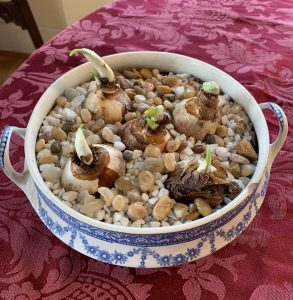
Narcissus bulbs
This week I have been very much back into awe and wonder and the glimpses of light I see. There is not just the wonder of the Advent story, but there is also the awe and wonder of what is already beginning to emerge in this season. Over the weekend, I planted narcissus bulbs in the hope and expectation that they will be flowering by Christmas. I love to watch them stretching towards the light, slowly unfolding their leaves and then their flowers. Then as I wander around my house, there is the awe and wonder of my Thanksgiving and Christmas cacti (schlumbergera) beginning to blossom. I love these exotic looking flowers, almost like a tropical bird zooming through the air. Finally on my walk, I was inspired by the last of the falling leaves – the glorious carpet of red Japanese maple I pass each day on my walk has particularly held my attention.
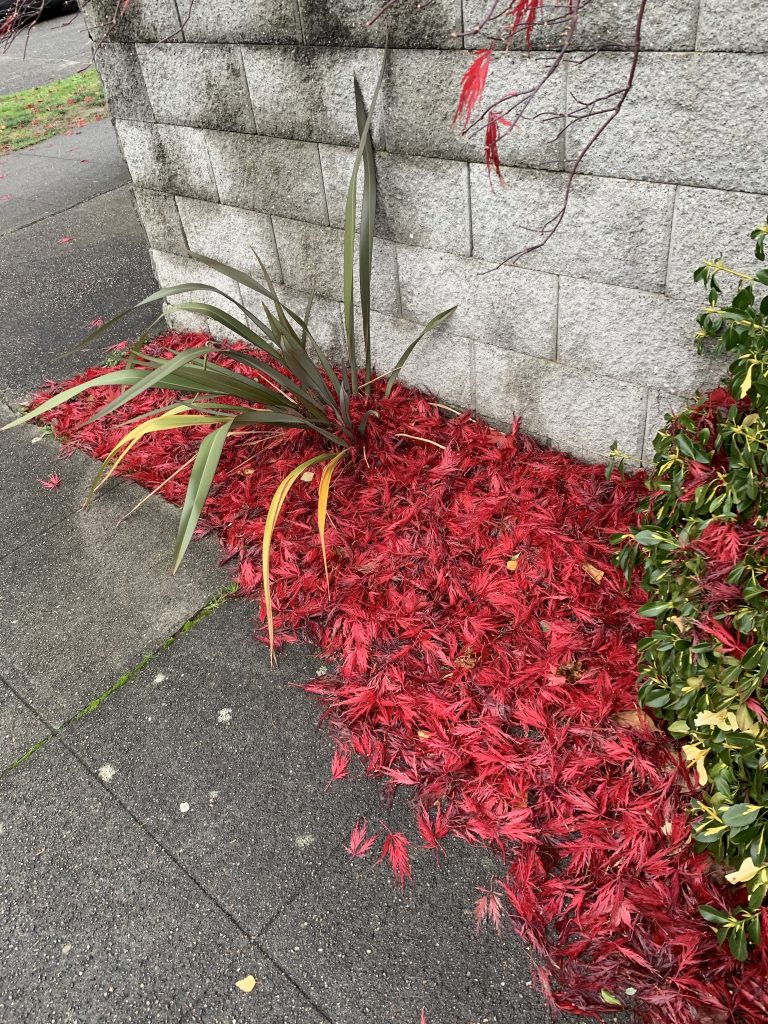
Red carpet – Japanese Maple leaves
Not surprisingly, I have gained loads of photos of these awe inspiring sights. And suddenly as I sorted through them today, I realized that my photos could be divided into three categories: planting, growing, and flourishing. And in that, I see the whole Advent story lived out. God’s desire, a message that I think is implicit in the story of Advent, is a flourishing creation.
The Eternal God planted a garden in the east in Eden—a place of utter delight—and placed the man whom He had sculpted there. In this garden, He made the ground pregnant with life—bursting forth with nourishing food and luxuriant beauty. He created trees, and in the center of this garden of delights stood the tree of life and the tree of the knowledge of good and evil. (Gen 2:8,9 The Voice)
The Old Testament begins with God planting a garden, a place of utter delight, pregnant with life that is meant to grow and flourish. Here, God shapes humankind from the soil to tend the garden, drawing all of us into the eternal story as caretakers of a creation that is meant to flourish.
In the beginning of the New Testament, God plants a single seed of divine presence, a single seed of a new creation, entering the human story and meant to grow, flourish and be multiplied throughout the earth. No sculpting into being of a fully formed human this time, but the planting of a tiny seed that must grow and develop as we all did, in a mother’s dark and nurturing womb, in the right season breaking out as a new born baby that like us took years to develop into a fully mature human.
It seems to me that in the new garden, Jesus invites us to be a part of, we are no longer caretakers but co-creators. In this garden, that the planting of Jesus as a tiny seed in Mary’s womb began, we are all encouraged to bring about flourishing as we allow the seeds of justice and peace and generosity and goodness to be planted within us. Here we are encouraged not just to lean towards the light of Christ but to allow the light to grow within us until it bursts through the darkness of our world and brings light.
Not surprisingly that made me think of this beautiful Celtic Blessing (Lean Towards the Light this Advent & Christmas, p54-55).
I suggest that you read through this blessing slowly then sit in your quiet space absorbing the light of God around you and within you, warming your heart and filling you with that wonderful light of Christ. Imagine it germinating the seeds planted deep within you. See them growing towards the light of Christ. What would they look like if they grew to maturity, flourished, flowered and contributed their beauty and fragrance to God’s growing new creation garden? What do you need to do during this Advent season to make that happen?
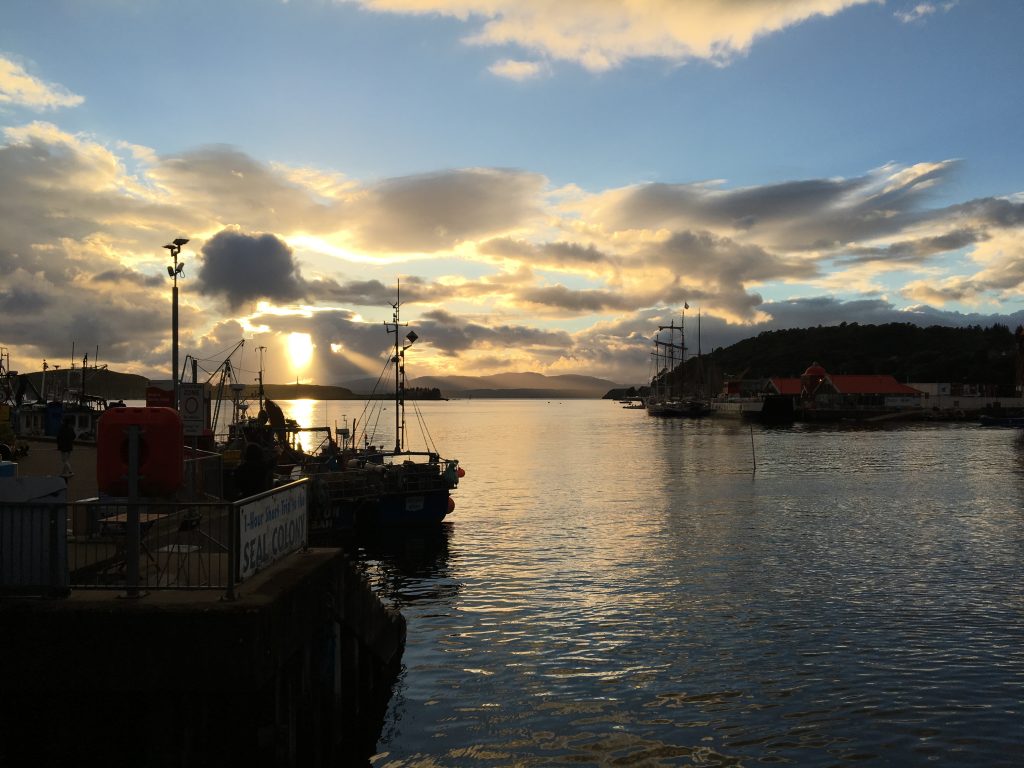
Sunset Oban Scotland – Christine Sine
May the blessing of Light be on you
Light without and light within,
May the blessed sunlight shine on you
And warm your heart till it glows like
A great peat fire, so that the stranger
May come and warm himself at it,
And also a friend.
And may the light shine out of the two eyes of you,
Like a candle set in two windows of a house,
Bidding the wanderer to come in out of the storm.
And may the blessing of the Rain be on you
The soft sweet rain. May it fall upon your spirit
So that all the little flowers may spring up,
And shed their sweetness on the air.
And may the blessing of the Great Rains be on
You, may they beat upon your spirit
And wash it fair and clean,
And leave there many a shining pool
Where the blue of heaven shines,
And sometimes a star.
And may the blessing of the Earth be on you
The great round earth; may you ever have
A kindly greeting for them you pass
As you’re going along the roads.
May the earth be soft under you when you rest upon it,
Tired at the end of the day,
And may it rest easy over you when,
At the last, you lay out under it;
May it rest so lightly over you,
That your soul may be out from under it quickly,
And up, and off, and on its way to God.
Today’s contemplative service celebrates the last Sunday of the liturgical year. It begins with a beautiful prayer from Mother Theresa. Enjoy!
A contemplative service with music in the style-of-Taize for the Last Sunday after Pentecost. Carrie Grace Littauer, prayer leader, with music by Kester Limner and Andy Myers.
Permission to podcast/stream the music in this service obtained from One License with license #A-710-756 with additional notes below.
“Magnificat” and “Bless the Lord” are songs from the Taize community – copyright and all rights reserved by GIA/Les Presses de Taizé.
“Bring Your Peace” and “Kyrie for November 22” – words and music by Kester Limner, shared under the Creative Commons License, Attribution (CC-BY).
“Shepherd Song” – lyrics adapted from John 10:11-18, music by Kester Limner, shared under the
Creative Commons License, Attribution (CC-BY).
www.saintandrewsseattle.org
by Christine Sine
One of my delights this last week was interviewing Donna Barber, author of Bread for the Resistance, one of our alternative readings for Advent this year. I heard Donna read one of the devotions from this book at a conference early this year and was really inspired by it. In fact I have not been able to get it out of my mind. Over the last few days I have been enjoying reading through some of her other devotions and continue to be inspired and motivated by what she writes. I hope you will be too.
Bread for the Resistance: Forty Devotions for Justice People
Bio for Donna Barber
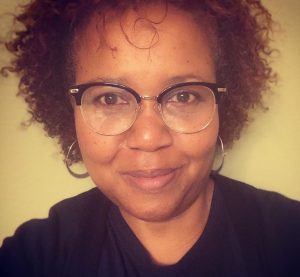
Donna Barber
Donna Barber, a native Philadelphian, has served as an educator, program director, trainer and coach for urban youth and urban youth program leaders for more than 25 years. In Philadelphia and Atlanta, she worked to create and lead schools and programs that develop urban youth to be spirit-led, socially aware, community-minded leaders. Also a licensed minister, Donna has served with local churches, private and public schools and local non-profits. She holds degrees in Communications and Urban Teacher Leadership and has provided trainings and coaching for national organizations including Mission Year, CCDA, DeVos Urban Leadership Initiative, Portland Leadership Foundation and several colleges and universities.
Presently, Ms. Barber serves as Executive Director and Co-Founder of The Voices Project, a national network that exists for the training and promotion of leaders of color and as President of The Voices School for Liberation and Transformation. Donna is the first African American to be elected to the David Douglas School Board, in Portland, Oregon, a member of the district and Regional School Board Equity Teams, and a published author. Her book, “Bread for the Resistance: 40 Devotions for Justice People,” was released in 2019 by IVPress. She currently resides in Portland, OR with her husband, author, speaker, and Voices President, Leroy Barber, and together they have six children.
As an Amazon Associate, I receive a small amount for purchases made through appropriate links.
Thank you for supporting Godspace in this way.
When referencing or quoting Godspace Light, please be sure to include the Author (Christine Sine unless otherwise noted), the Title of the article or resource, the Source link where appropriate, and ©Godspacelight.com. Thank you!


